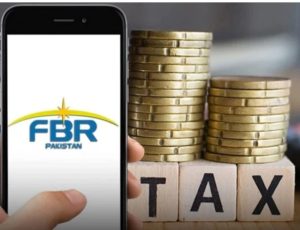LONDON (Web Desk) – The expected flagship phones have been announced it’s time to take a look at the best smartphones to kick off 2015.
1. Apple iPhone 6 & 6 Plus
I bought my iPhone 6 Plus the day it was released and while I do pop my SIM in other phones, when I am going out and carrying just one it is the iPhone 6 Plus. It has yet to let me down and while it doesn’t conveniently fit into my pants pocket, it lasts all day, takes great photos, gives me all the apps I need, and is very well designed.
Since I purchased it back in November, I’ve written a few articles about why I think it is the best, including my full iPhone 6 Plus review and one month with the iPhone 6 Plus article after further usage.
The iPhone 6 is included here too since it’s essentialy the same device as the iPhone 6 Plus, except for the size, battery capacity, and optical image stabilization in the camera. Recent data shows that the public overwhelmingly chooses the iPhone 6 over the iPhone 6 Plus so size does still matter to most folks.
The Apple iPhone 6 and 6 Plus remain the most expensive smartphones available today with full prices ranging from $649 to $949 and two-year contract subsidized prices ranging from $199 to $499. For those of us who use our smartphones daily as an essential tool for getting work done, the cost is justified.
2. Samsung Galaxy Note 4/Note Edge
Samsung significantly improved the design of its flagship smartphone with a full metal frame and improved camera. The Note 4 and Note Edge have excellent cameras that match, and often beat, the results I see from the iPhone 6. If you want the most powerful Android phone, then the Note 4 and Note Edge deserve serious consideration.
The Note 4 is powered by a Snapdragon 805 quad-core processor, with a 5.7-inch 2560 x 1440 Super AMOLED screen, 3GB of RAM, 32GB internal storage with support for a microSD card, 16-megapixel camera, 3.7-megapixel front-facing camera, and large 3220 mAh replaceable battery. Now that the Galaxy S6 is known, the removable battery and microSD card slot set the Note 4 up as a device for the road warrior.
The Note 4 and Note Edge are the most expensive Android smartphones ($750 to $870), but in this case performance matches the price. I thoroughly enjoyed my month with the Samsung Note Edge and found the edge display quite useful.
3. HTC One M9
HTC just revealed the One M9 last week and I was able to spend 24 hours testing one out. Everything about the HTC One M9 is an improvement over the One M7 and One M8 so if you were happy with one, or both, of those devices then you will be thrilled with the HTC One M9.
The UltraPixel camera was improved and moved to the front of the phone where it fits in best with expectations for front facing cameras. The rear camera was upgraded to a 20-megapixel shooter that performs better for those who want more detail in their phone pictures.
The design was improved with two-tone color metal and an in-hand feel that shouldn’t slip as much as the One M8 did. HTC Sense has been improved to provide more personalization at a time when people are looking for ways to make their phone unique.
The internal specs have been updated to include a Qualcomm Snapdragon 810 octa-core processor, 3GB RAM, 32GB internal storage, microSD card slot, and large 2800 mAh battery.
4. Sony Xperia Z3
My primary Android smartphone at the moment and the one that seems to be the Rodney Dangerfield of the smartphone world (it doesn’t get any respect) is the Sony Xperia Z3. It is only available from T-Mobile in the US, there is a variant of it on Verizon, but when you travel you will see the Z3 in hands of people everywhere around the world.
Android Lollipop should be arriving soon and it looks like we won’t see an Xperia Z4 for a few more months. The Z3 isn’t perfect, but it’s the Android phone I keep coming back to and I just can’t fully explain why.
5. Samsung Galaxy S6/S6 Edge
Samsung revealed the Galaxy S6 and S6 Edge at MWC and I was able to spend some time with both at the press event. I feel the design has been significantly improved, but the trade-offs made for the design killed off a few reasons that people chose the Samsung Galaxy S line over other Android smartphones.
The Samsung Galaxy S6 and S6 Edge are powered by a Samsung Exynos octa-core processor, 3GB of RAM, 32GB/64GB/128GB internal storage, 16 megapixel camera, 5.1 inch Super AMOLED 2560 x 1440 pixel display, integrated wireless charging, and more. Note that the removable battery is gone, as well as microSD memory card expansion.
The camera improves on the Note 4 so should perform amazingly well. The battery life concerns me a bit, but these new Galaxy phones do support Quick Charge technology. The Galaxy S6 models arrive in April so stay tuned for further coverage.
6. BlackBerry Passport
While I used BlackBerry phones a bit over the years, my engineering company never had a BES so I was never as impressed by the email performance as most BlackBerry fans. However, nothing beats the BlackBerry Passport for centralized communications and I continue to use it for comms and the BlackBerry Blend utility.
Some may question placing it this high on my list, but I honestly keep going back to using it because the communications really are that great.
The BlackBerry Passport, see my full review has specifications that match high end smartphones today and comes in a unique form factor that is optimized for productivity. There are very few phones with hardware QWERTY keyboards and BlackBerry has optimized it for utility with touch-sensitive support.
The BlackBerry Passport has a 4.5-inch 1440 x 1440 pixel resolution display, full hardware QWERTY keyboard, 13-megapixel camera, 3GB RAM, 32GB internal storage, microSD card slot, and large 3,450 mAh battery.
If unified communications is important to you, then it will be tough to beat the awesome BlackBerry Hub. The BlackBerry Passport is available in black, white, and red as an unlocked model and also with more curved edges on AT&T.
7. Moto X 2014
One phone that I have had in my shopping cart a number of times over the past few months, but never pulled the trigger on is the Moto X. The ability to buy a customized phone with a leather or wood back is compelling and for those looking for a truly unique device then the Moto X is a great candidate.
The Moto X has a nearly pure Google experience with Android Lollipop, fantastic Motorola experience enhancements, and a solid form factor. Motorola continues to price the Moto X at a very reasonable $499 no-contract cost, with subsidies dropping it as low as $99.
The Moto X has been out for several months and Motorola has had special offers at various times the past few months. I expect to see a price drop soon as new Samsung and HTC flagships hit the market.
The Moto X with 5.2 inch 1080p display fits well in your hand and pocket while the Snapdragon 801 and 2GB keep it running smoothly. The 2300 mAh battery powers most people for a day, but does limit me a bit.
8. LG G Flex 2
While I have yet to hold the LG G Flex 2, it appears that LG continues to release excellent smartphones with some unique characteristics. The 2014 LG G Flex looked to be a reference device to test some new technologies so I was a bit surprised to see the G Flex 2 revealed at CES in January. It improves in several areas over the G Flex.
The LG G Flex 2 arrives this month on Sprint with other carries launching it soon after. It has a 5.5 inch 1080p display, Android 5 Lollipop, 13 megapixel camera, 3000 mAh battery, and Snapdragon 810 octa-core processor.
One unique feture is the curved plastic OLED display that lets you flex (bend) the phone just a bit. A self-healing back also helps cure scratches when they happen.
9. Google Nexus 6
Google releases a Nexus device each year and while this year’s has a ton of features and large form factor, the Google Nexus 6, made by Motorola, is not the best Android device available.
Unlike previous Nexus devices where there was always one or two things missing, the Nexus 6 is not really lacking in any specification. It has a large 5.92-inch 2560 x 1440 pixel resolution display, Snapdragon 805 processor, 3GB RAM, 32/64 GB internal storage, large 3900 mAh battery, 20-megapixel camera, Qi wireless charging, and water resistance.
It turns out the display resolution is too high so that battery life is barely acceptable, the camera can take good photos but the conditions have to be just right, and it is difficult to find one available to purchase.
The Nexus 6 is priced at $649 for 32GB and $699 for 64GB, which is still less than the iPhone 6 Plus, but $250 more than the Nexus 5 last year. The original couple of Nexus devices were priced at full price so the idea that Nexus was just an affordable smartphone is not accurate.
10. Nokia Lumia 830
I had to include this device in my top 10 list, even if it doesn’t have the top specs of other Android devices I did not include. I recently purchased a Nokia Lumia 830, check out the ZDNet review, and am extremely impressed by the performance of this sub-$400 smartphone.
Windows Phone 8.1, with Denim update, flies on the Snapdragon 400 processor with 1GB RAM, 16GB integrated storage, microSD card slot, 10 megapixel camera, 2200 mAh replaceable battery, and 5 inch 720p display.
The metal frame and curved Gorilla Glass feel and look great, the bright orange or green back stand out from the crowd, the camera performs nearly as well as the top smartphones, and the price just cannot be beat.
In my gear bag right now you will find the Apple iPhone 6 Plus, BlackBerry Passport, Sony Xperia Z3, and Nokia Lumia 830. I paid between $375 to $900 for these four phones and to be honest the $375 Nokia Lumia 830 meets 90 percent of my needs.














